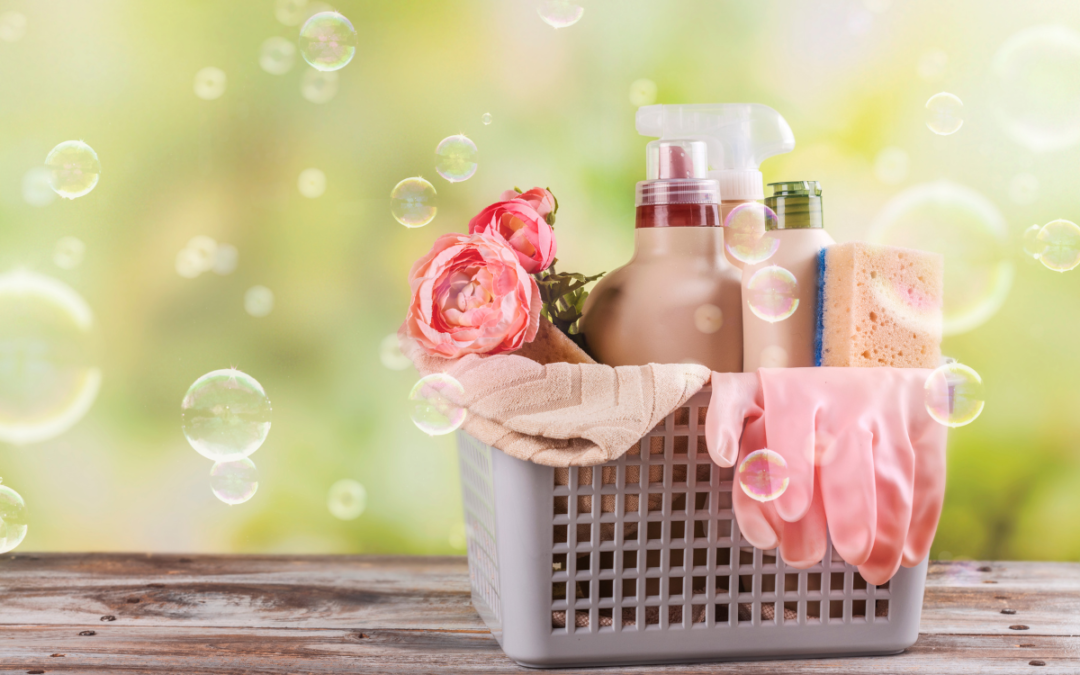Spring is the perfect time for your home’s annual deep clean. Not only is spring cleaning a great way to reset, but the yearly chore also gets rid of winter’s accumulated dust and dander before allergy season reaches full swing. Cleaning your home from top to bottom may never be effortless, but you can make the project more manageable with our printable checklist from Martha’s Homekeeping Handbook, complete with advice from cleaning experts.
Whether you prefer to proceed from the attic to the basement or start outdoors and wind your way inside, create a realistic schedule and focus on one task at a time. You’ll need several days for more involved projects, such as cleaning the attic and organizing closets, but in due time, you’ll check everything off your list—and have a sparkling clean home by the end of it.
Materials Needed
Before starting your spring cleaning journey, you’ll want to make sure you have all of the tools necessary to complete every task on your list. There are a handful of cleaning supplies you’ll need, but your list will be largely dictated by your own personal cleaning methods. As a general guide, though, most spring cleaning kits should have the following:
- Bucket
- Clean microfiber cloths
- Sponges
- Reusable spray bottle
- All-purpose cleaner
- Duster
- White distilled vinegar
- Baking soda
- Dish soap
- Vacuum
- Mop
What to Clean in Every Room
There are some general cleaning tasks you should complete in every room of your house, from your attic all the way to the basement.
1. Clean Baseboards
Spring cleaning is the perfect time to clean your baseboards. “Although they’re often overlooked, clean baseboards give your home the perfect finishing touch,” says Leanne Stapf, COO of The Cleaning Authority. Baseboards can be easily cleaned with a vacuum with a bristled brush hose attachment to remove any dust; then, wipe them down with a damp microfiber cloth and all-purpose cleaner.
2. Dust
No matter how much you try to prevent it, dust builds up in every room of the house. When dusting, work from the top of a room down, vacuuming the dust that settles on the floor. This includes hard-to-reach places, such as the tops of ceiling fans and window casings.
Don’t forget to also dust your books and bookshelves. Take everything off the shelves and brush them (along with the books) with a feather duster. Use the dust brush or crevice tool on a vacuum to reach into tight spots. Wipe the spines of leather-bound books with a clean, soft cloth.
3. Vacuum
Go over all of your floors with a vacuum to get up any crumbs and loose dirt. “It’s common to track the bacteria and dirt from your shoes across the carpet,” says Stapf. “Not only can a buildup of grime break down your carpet fibers, but it can also harbor pollutants that may make you sick.”
4. Mop
:max_bytes(150000):strip_icc()/mopping-wood-floors-getty-0123-2000-5479e90420a8494bb3317e611892bbf0.jpg)
After vacuuming, go over your floors with a mop. “Floors are one of the most exposed areas in our homes, which is why mopping them frequently is crucial in keeping your home clean,” says Diane Amos, cleaning expert for Pine Sol.
5. Shampoo Rugs
Synthetic carpets and rugs with waterproof backings can be deep-cleaned with a rotary shampoo machine and a hot-water extraction machine. Rugs without backings require professional cleaning.
6. Wipe Walls and Ceilings
Over time, our walls and ceilings build up with unwanted marks. To clean your walls, start by using a vacuum to remove dust. Next, tackle stubborn surface grime, which is especially prevalent in kitchens, with a solvent-free degreaser (test it first in an inconspicuous area to ensure it won’t mar the surface).
7. Reseal Grout Lines
The cement-based material between wall, floor, and countertop tiles is extremely porous and stains easily. Protect it with a penetrating grout sealer—it’s best to apply it with a small foam brush.
8. Clean Upholstered Furnishings
:max_bytes(150000):strip_icc()/spring-cleaning-checklist-upholstery-getty-0323-2000-4b058685d12e4cf4b50f3ac6df6723a0.jpg)
Take cushions outside and gently beat them by hand to remove dust. If there are stains, check the care labels for cleaning recommendations. Use a vacuum’s upholstery and crevice tools to clean under seat cushions.
9. Polish Metal Door and Window Hardware
Return dull knobs, hinges, and other metal finishes to their former glory with a quick polish. Liquid polishes and polish-dampened cloths work well for medium-tarnished surfaces, while pastes and creams are best for heavier work.
10. Wax Surfaces
Clean wooden surfaces with a soft cloth dampened with water and mild dishwashing liquid. Then apply wax a few feet at a time with a cotton rag folded into a square pad. Let the wax dry; buff with a clean cloth.
Additionally, vinyl and linoleum floors that have lost their shine should be waxed with a polish designed for these surfaces. Most stone and tile floors can be treated with either a paste or a liquid wax designed for the material.
11. Clean Window Furnishings
:max_bytes(150000):strip_icc()/how-to-clean-curtains-shades-and-blinds-lead-0123-2000-bb580ce88b3043ca8984d27a6c2effa2.jpg)
Drapes, curtains, and blinds should also be tended to. “While we may not directly interact with them, curtains can accumulate dust and odors from around the home and need to be cleaned,” says Stapf. “Give the curtains a little extra TLC once every season, but look at their material before throwing them in the washing machine. Some may need to be sent to the dry cleaners.”
12. Wash Window Screens
Window screens get very dirty throughout the year. Clean them using warm water and a mild dishwashing liquid, scrubbing each screen with a brush. Once clean, rinse them thoroughly with water.
13. Clean Light Fixtures and Ceiling Fans
Light fixtures are a hub for dust. “Your ceiling fan is a great place to start—just make sure you turn off the light bulb and let it cool before wiping them down,” says Amos. “When it comes to your lamps, be sure to unplug those as it gives them time to cool off before starting the cleaning process.”
14. Implement Fire Safety
Change batteries in smoke detectors (this should be done twice a year) and make sure units are free of dust. Teach everyone in your household how to use a fire extinguisher, and review escape plans.
Looking for room-by-room spring cleaning checklists? Find them here.
Courtesy of Martha Stewart



